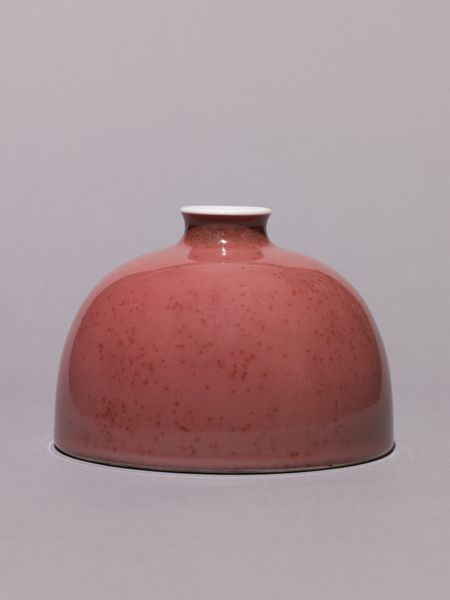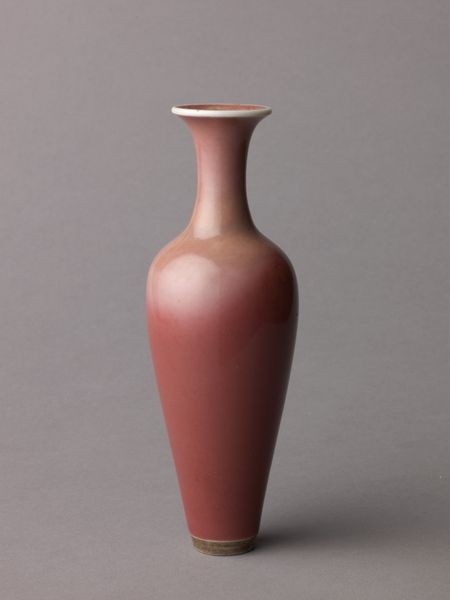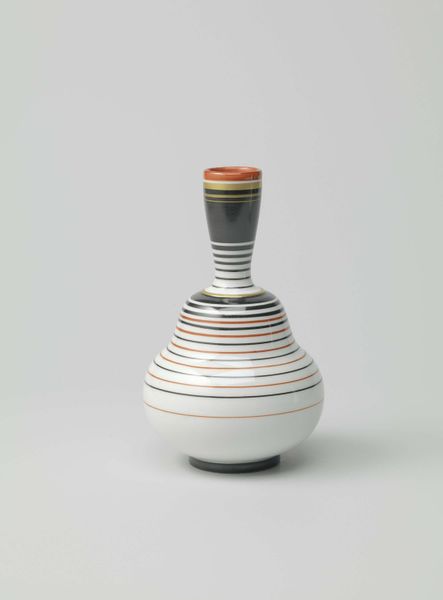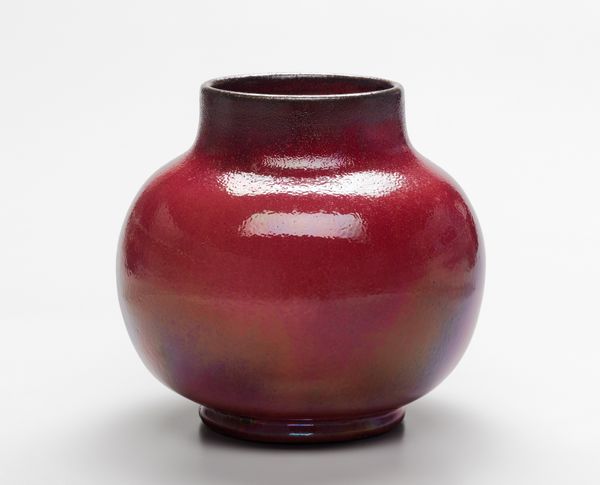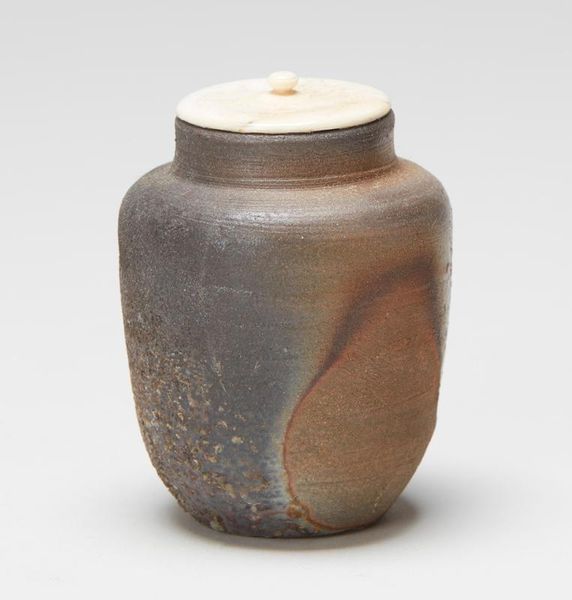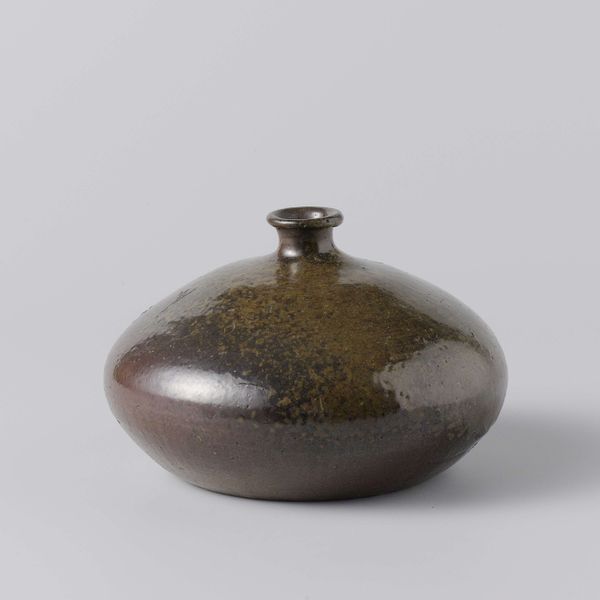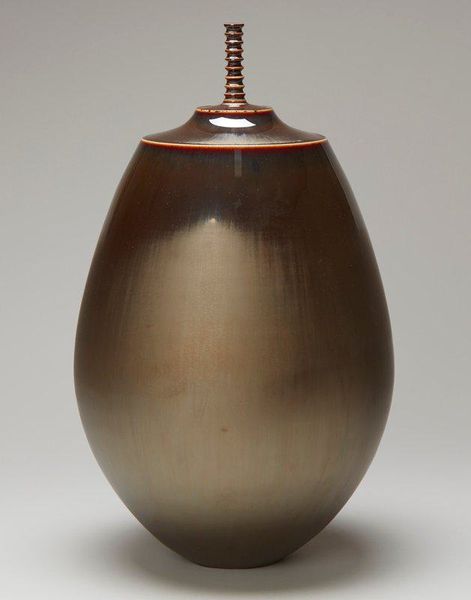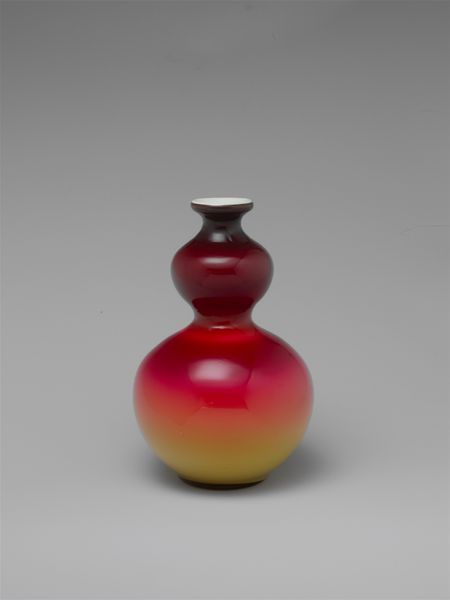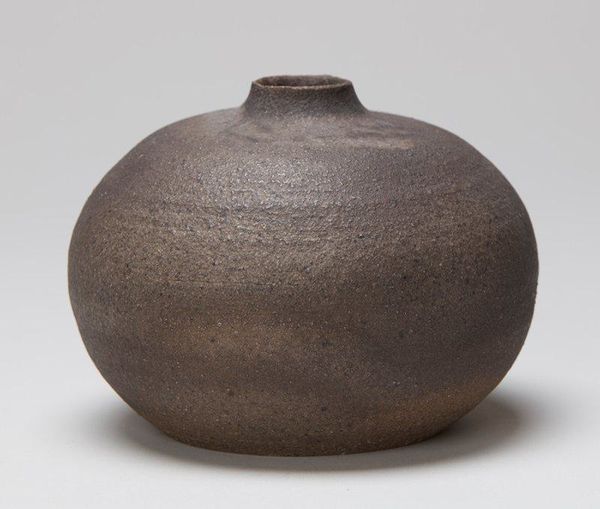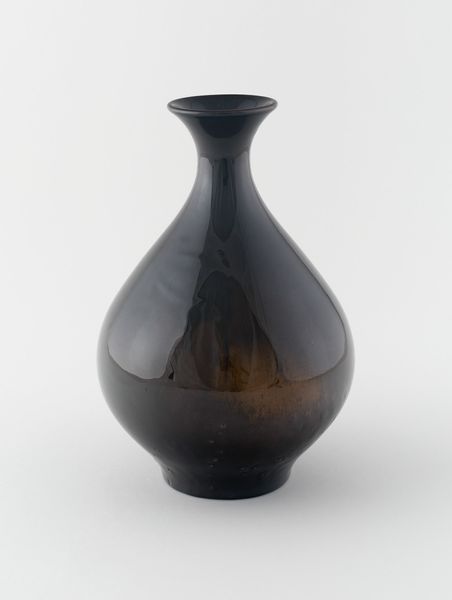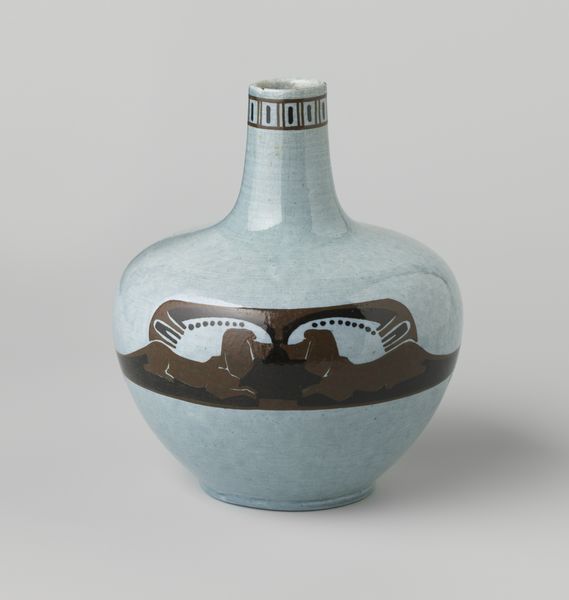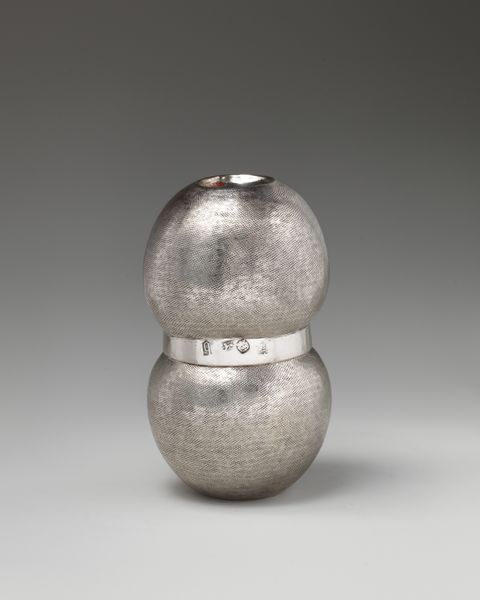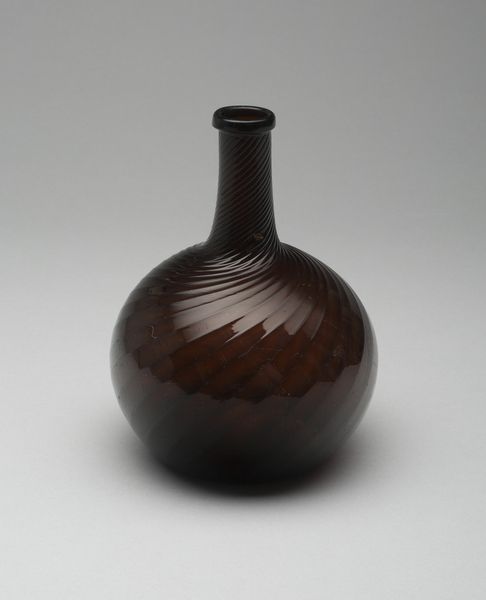
Pot, peervormig, met rode glazuur en een houten stopje, staande op een houten plankje c. 1925
0:00
0:00
ceramic, earthenware, sculpture
#
ceramic
#
earthenware
#
sculpture
#
ceramic
Dimensions: height 10 cm, height 8.3 cm, diameter 7 cm, depth 13.8 cm, width 10.3 cm, height 0.9 cm, height 2.4 cm, diameter 2.1 cm
Copyright: Rijks Museum: Open Domain
Editor: This ceramic pot, made around 1925 by Henry Simmen, has such a striking simplicity to it. The vibrant red glaze contrasts so nicely with the dark wood. It almost looks like some kind of stylized fruit. What resonates with you when you look at this piece? Curator: Immediately, I think of ancient vessels used for offerings. The color red, particularly, is powerfully symbolic across many cultures. Think of ritualistic objects: the lifeblood, the vitality, the passion infused within. The wood base elevates it, presents it almost reverentially. Editor: That’s interesting. So you’re seeing this less as a functional object and more as a symbolic one? Curator: Precisely. The smooth, pear-like form, combined with the intensity of the red glaze, it's suggesting something held sacred within. And notice the stopper. The silhouette created, intentionally disrupts any pure geometricity of the form, evoking an archaic feel. Editor: Now that you point that out, I notice the imperfection in the glaze, creating these darker patches of colour that accentuate the texture of the ceramic form and contrast against the dark lid. Curator: These are not flaws, but enhancements of visual storytelling, of the passage of time, don’t you think? A story is there, not immediately visible, but rather, waiting to be revealed to us as we study and contemplate this earthen vessel. Editor: It’s fascinating how the artist used such basic materials to evoke such a profound sense of history. I might think differently about simple objects now. Curator: Exactly, isn't it? That seemingly simple forms and colors carry within them echoes of ritual, memory, and the enduring power of visual symbols.
Comments
No comments
Be the first to comment and join the conversation on the ultimate creative platform.
